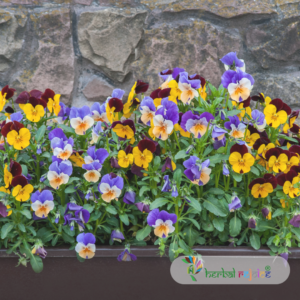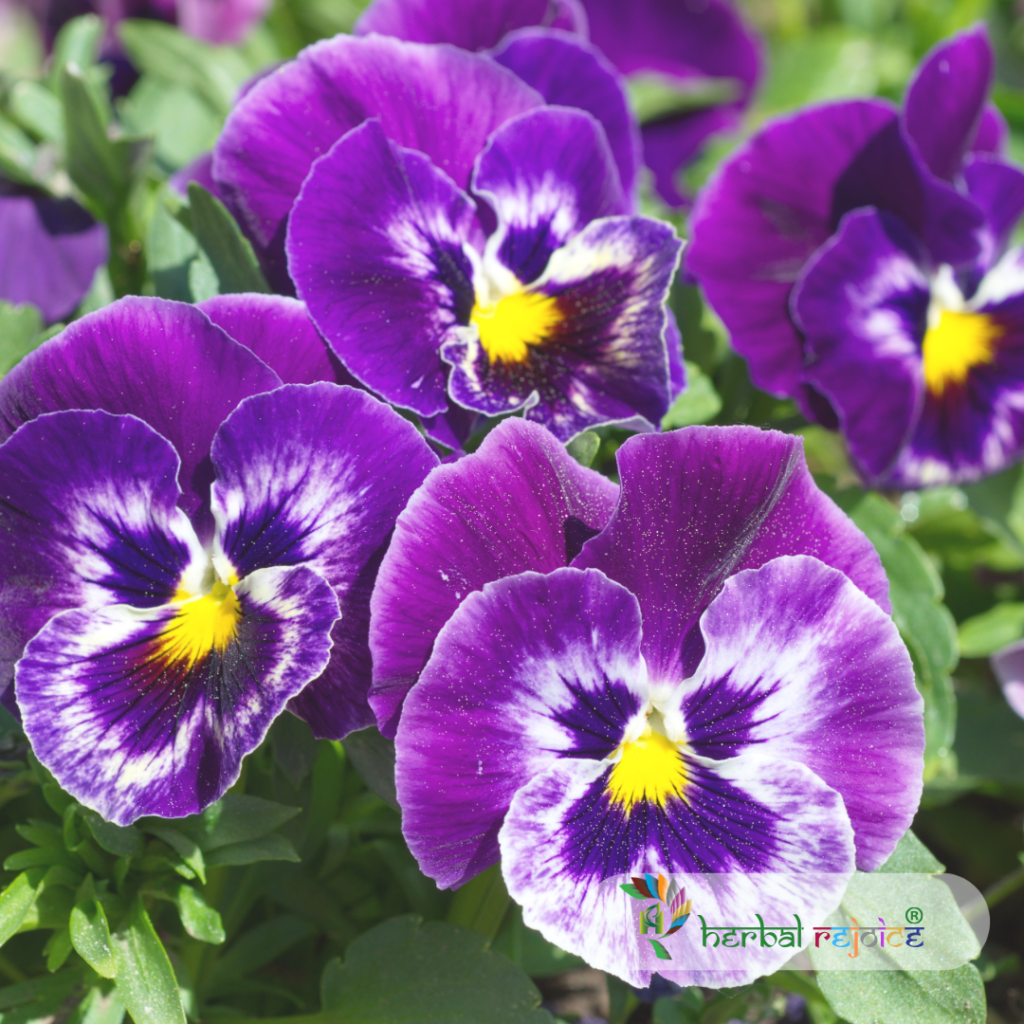Introduction
Viola tricolor Linn., commonly known as Heartsease or Wild Pansy, is a herb native to Europe. It is often grown as an ornamental plant due to its beautiful flowers. In the Unani system of medicine, a related species of Viola tricolor called Banafashaa is used for its medicinal properties.
Therauptic potential of Viola tricolor
The herb has anti-inflammatory, antiallergic, expectorant, diuretic, antirheumatic, and alterative actions. It is commonly used for treating bronchitis, rheumatism, chronic skin disorders, and preventing capillary hemorrhage in individuals undergoing corticosteroid therapy. In traditional medicine, the root of Viola tricolor is also used as an antidysenteric and a substitute for Cephaelis ipecacuanha.
One of the key applications of Viola tricolor is its use in mild seborrheic skin diseases and milk scall in children. This use is recognized by the German Commission E and The British Herbal Pharmacopoeia, which also acknowledges its expectorant and dermatological properties.

Components of Viola tricolor
The herb contains several active compounds, including rutin, violin, and salicylic acid. The flowers of Viola tricolor are rich in rutin, quercetin, violanthin, violaxanthin, phydroxycinnamic acid, and delphinidin. A flavone C-glycoside-saponarin has also been isolated from the flowers. Additionally, the flowers contain 15-cisviolaxanthin. The herb is known to possess anticoagulant properties and can help reduce platelet aggregation. This makes it a potential preventive measure against thrombosis.
Conclusion
In conclusion, Viola tricolor Linn. or Heartsease/Wild Pansy is a herb with various medicinal properties. It is commonly used in the treatment of bronchitis, rheumatism, chronic skin disorders, and as a preventive measure against capillary hemorrhage. It is also beneficial for mild seborrheic skin diseases and milk scall in children. The herb contains several active compounds, including rutin, violin, and salicylic acid, and its flowers are rich in various flavonoids. Its anticoagulant properties make it a potential tool for preventing thrombosis.
Frequently Asked Questions
What is Viola tricolor Linn. commonly known as?
– Viola tricolor Linn. is commonly known as Heartsease or Wild Pansy.
Where is Viola tricolor native to?
– Viola tricolor is native to Europe.
Why is Viola tricolor often grown as an ornamental plant?
– Viola tricolor is often grown as an ornamental plant because of its beautiful flowers.
What are some of the medicinal properties of Viola tricolor?
– Viola tricolor has anti-inflammatory, antiallergic, expectorant, diuretic, antirheumatic, and alterative actions.
What conditions can Viola tricolor be used to treat?
– Viola tricolor can be used to treat bronchitis, rheumatism, chronic skin disorders, and prevent capillary hemorrhage in individuals undergoing corticosteroid therapy.
What is the traditional use of the root of Viola tricolor?
– The root of Viola tricolor is traditionally used as an antidysenteric and a substitute for Cephaelis ipecacuanha.
What are the recognized uses of Viola tricolor in German and British herbal pharmacopoeias?
– Viola tricolor is recognized for its use in mild seborrheic skin diseases and milk scall in children by the German Commission E and The British Herbal Pharmacopoeia.
What are the active compounds found in Viola tricolor?
– Some of the active compounds found in Viola tricolor include rutin, violin, and salicylic acid.
What are the key compounds found in the flowers of Viola tricolor?
– The flowers of Viola tricolor are rich in rutin, quercetin, violanthin, violaxanthin, phydroxycinnamic acid, and delphinidin.
What is the additional flavone C-glycoside found in the flowers of Viola tricolor?
– The flowers of Viola tricolor also contain a flavone C-glycoside called saponarin.
What is the benefit of Viola tricolor’s anticoagulant properties?
– Viola tricolor’s anticoagulant properties can help reduce platelet aggregation, making it a potential preventive measure against thrombosis.
Can Viola tricolor be used for mild seborrheic skin diseases?
– Yes, Viola tricolor is recognized for its use in mild seborrheic skin diseases by the German Commission E and The British Herbal Pharmacopoeia.
What childhood condition can Viola tricolor help with?
– Viola tricolor can help with milk scall, a condition commonly found in children.
What are the potential benefits of using Viola tricolor in individuals undergoing corticosteroid therapy?
– Viola tricolor can potentially prevent capillary hemorrhage in individuals undergoing corticosteroid therapy.
Is Viola tricolor beneficial for individuals with bronchitis?
– Yes, Viola tricolor is commonly used for treating bronchitis.
How can Viola tricolor benefit individuals with rheumatism?
– Viola tricolor has antirheumatic actions, making it beneficial for individuals with rheumatism.
What are some of the compounds found in the flowers of Viola tricolor?
– Some compounds found in the flowers of Viola tricolor include rutin, quercetin, violanthin, violaxanthin, phydroxycinnamic acid, and delphinidin.
Can Viola tricolor be used to prevent thrombosis?
– Yes, Viola tricolor’s anticoagulant properties make it a potential preventive measure against thrombosis.
How is Viola tricolor used in traditional medicine?
– Viola tricolor is used as an antidysenteric and a substitute for Cephaelis ipecacuanha in traditional medicine.
What is the importance of Viola tricolor’s active compounds?
– Viola tricolor’s active compounds, such as rutin, violin, and salicylic acid, contribute to its medicinal properties and benefits.


